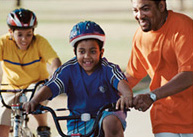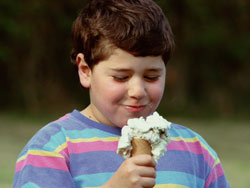Healthy Weight - is a Lifestyle - not a Diet!
When it comes to weight loss, there's no lack of fad diets promising fast results. But such diets limit your nutritional intake, can be unhealthy, and tend to fail in the long run.
The key to achieving and maintaining a healthy weight isn't about short-term dietary changes. It's about a lifestyle that includes healthy eating, regular physical activity, and balancing the number of calories you consume with the number of calories your body uses.
Staying in control of your weight contributes to good health now and as you age.
Take Control

Assess Your Weight -
The first step is to determine whether or not your current weight is healthy. BMI – Body Mass Index is one way to measure your weight.
 Lose Weight - Healthy weight loss isn't just about a "diet" or "program". It's about an ongoing lifestyle that includes long-term changes in daily eating and exercise habits.
Lose Weight - Healthy weight loss isn't just about a "diet" or "program". It's about an ongoing lifestyle that includes long-term changes in daily eating and exercise habits.

Prevent Weight Gain -
To stay at a healthy weight, it's worth doing a little planning now. If you are overweight but aren't ready to lose weight, preventing further weight gain is a worthy goal.
You can add this widget to your Web site to let anyone calculate their Adult Body Mass Index (BMI). BMI is a number calculated from a person's weight and height. BMI provides a reliable indicator of body fatness for most people and is used to screen for weight categories that may lead to health problems. This calculator provides BMI and the corresponding BMI weight status category. Use this calculator for adults, 20 years old and older.
Get the code on the CDC Widgets Page.
Tips for Parents – Ideas to Help Children
Maintain a Healthy Weight
You've probably read about it in newspapers and seen it on the news: in the United States, the number of obese children and teens has continued to rise over the past two decades. You may wonder: Why are doctors and scientists troubled by this trend? And as parents or other concerned adults, you may also ask: What steps can we take to help prevent obesity in our children? This page provides answers to some of the questions you may have and provides you with resources to help you keep your family healthy.
- Why is childhood obesity considered a health problem?
- What can I do as a parent or guardian to help prevent childhood overweight?
- Want to learn more?
Why is childhood obesity considered a health problem?
Doctors and scientists are concerned about the rise of obesity in children and youth because obesity may lead to the following health problems:
- Heart disease, caused by:
- high cholesterol and/or
- high blood pressure
- Type 2 diabetes
- Asthma
- Sleep apnea
- Social discrimination
Childhood obesity is associated with various health-related consequences. Obese children and adolescents may experience immediate health consequences and may be at risk for weight-related health problems in adulthood.
Psychosocial Risks
Some consequences of childhood and adolescent overweight are psychosocial. Obese children and adolescents are targets of early and systematic social discrimination. The psychological stress of social stigmatization can cause low self-esteem which, in turn, can hinder academic and social functioning, and persist into adulthood.
Cardiovascular Disease Risks
Obese children and teens have been found to have risk factors for cardiovascular disease (CVD), including high cholesterol levels, high blood pressure, and abnormal glucose tolerance. In a population-based sample of 5- to 17-year-olds, almost 60% of overweight children had at least one CVD risk factor while 25 percent of overweight children had two or more CVD risk factors.
Additional Health Risks
Less common health conditions associated with increased weight include asthma, hepatic steatosis, sleep apnea and Type 2 diabetes.
- Asthma is a disease of the lungs in which the airways become blocked or narrowed causing breathing difficulty. Studies have identified an association between childhood overweight and asthma.
- Hepatic steatosis is the fatty degeneration of the liver caused by a high concentration of liver enzymes. Weight reduction causes liver enzymes to normalize.
- Sleep apnea is a less common complication of overweight for children and adolescents. Sleep apnea is a sleep-associated breathing disorder defined as the cessation of breathing during sleep that lasts for at least 10 seconds. Sleep apnea is characterized by loud snoring and labored breathing. During sleep apnea, oxygen levels in the blood can fall dramatically. One study estimated that sleep apnea occurs in about 7% of overweight children.
- Type 2 diabetes is increasingly being reported among children and adolescents who are overweight.7 While diabetes and glucose intolerance, a precursor of diabetes, are common health effects of adult obesity, only in recent years has Type 2 diabetes begun to emerge as a health-related problem among children and adolescents. Onset of diabetes in children and adolescents can result in advanced complications such as CVD and kidney failure.8
In addition, studies have shown that obese children and teens are more likely to become obese as adults.
What can I do as a parent or guardian to help prevent childhood overweight and obesity?
To help your child maintain a healthy weight, balance the calories your child consumes from foods and beverages with the calories your child uses through physical activity and normal growth.
Remember that the goal for overweight and obese children and teens is to reduce the rate of weight gain while allowing normal growth and development. Children and teens should NOT be placed on a weight reduction diet without the consultation of a health care provider.
Balancing Calories: Help Kids Develop Healthy Eating Habits
One part of balancing calories is to eat foods that provide adequate nutrition and an appropriate number of calories. You can help children learn to be aware of what they eat by developing healthy eating habits, looking for ways to make favorite dishes healthier, and reducing calorie-rich temptations.
Encourage healthy eating habits.
 There's no great secret to healthy eating. To help your children and family develop healthy eating habits:
There's no great secret to healthy eating. To help your children and family develop healthy eating habits:
- Provide plenty of vegetables, fruits, and whole-grain products.
- Include low-fat or non-fat milk or dairy products.
- Choose lean meats, poultry, fish, lentils, and beans for protein.
- Serve reasonably-sized portions.
- Encourage your family to drink lots of water.
- Limit sugar-sweetened beverages.
- Limit consumption of sugar and saturated fat.
Remember that small changes every day can lead to a recipe for success!
Look for ways to make favorite dishes healthier.
The recipes that you may prepare regularly, and that your family enjoys, with just a few changes can be healthier and just as satisfying. For new ideas about how to add more fruits and vegetables to your daily diet check out the recipe database from the FruitsandVeggiesMatter.gov. This database enables you to find tasty fruit and vegetable recipes that fit your needs.
 Remove calorie-rich temptations!
Remove calorie-rich temptations!
Although everything can be enjoyed in moderation, reducing the calorie-rich temptations of high-fat and high-sugar, or salty snacks can also help your children develop healthy eating habits. Instead only allow your children to eat them sometimes, so that they truly will be treats! Here are examples of easy-to-prepare, low-fat and low-sugar treats that are 100 calories or less:
- A medium-size apple
- A medium-size banana
- 1 cup blueberries
- 1 cup grapes
- 1 cup carrots, broccoli, or bell peppers with 2 tbsp hummus
Balancing Calories: Help Kids Stay Active
Another part of balancing calories is to engage in an appropriate amount of physical activity and avoid too much sedentary time. In addition to being fun for children and teens, regular physical activity has many health benefits, including:
- Strengthening bones
- Decreasing blood pressure
- Reducing stress and anxiety
- Increasing self-esteem
- Helping with weight management
Help kids stay active.
Children and teens should participate in at least 60 minutes of moderate intensity physical activity most days of the week, preferably daily. Remember that children imitate adults. Start adding physical activity to your own daily routine and encourage your child to join you.
Some examples of moderate intensity physical activity include:
- Brisk walking
- Playing tag
- Jumping rope
- Playing soccer
- Swimming
- Dancing
 Reduce sedentary time.
Reduce sedentary time.
In addition to encouraging physical activity, help children avoid too much sedentary time. Although quiet time for reading and homework is fine, limit the time your children watch television, play video games, or surf the web to no more than 2 hours per day. Additionally, the American Academy of Pediatrics (AAP) does not recommend television viewing for children age 2 or younger. Instead, encourage your children to find fun activities to do with family members or on their own that simply involve more activity.
Want to learn more?
Here are some additional resources that you (and your child) can use to help reach or keep a healthy weight through physical activity and healthy food choices!
For Parents and Guardians
Child and Teen BMI (Body Mass Index) Calculator
Worried about your child's weight? For children, BMI is used to screen for overweight, but is not a diagnostic tool. For more, see About BMI for Children and Teens.
Childhood Overweight
This Web site provides information about childhood overweight, including how overweight is defined for children, the prevalence of overweight, the factors associated with overweight, and the related health consequences.
Physical Activity for Everyone
Provides information about physical activity for you and your children.
FruitsandVeggiesMatter.gov
Great recipes and information about how to incorporate fruits and vegetables in your daily meals.
How to Avoid Portion Size Pitfalls
Confused about portion sizes? Play the CDC's portion control game!
ChooseMyPlate.gov
Provides a tailored explanation of how to balance your meals and includes an interactive game for kids.
We Can!
This national education program is designed for parents and caregivers to help children 8-13 years old stay at a healthy weight. The booklet "Finding the Balance: A Parent Resources" offers an array of easy to use practical tips and tools for parents and guardians to help their children and families eat healthy, increase physical activity, and decrease screen time.
For Kids ONLY
BAM! Body and Mind
Have fun, stay active and healthy.
Blast Off Game
Learn what it takes to blast off in the food pyramid space shuttle!
Best Bones Forever!
A bone health campaign for girls and their BFFs to "grow strong together and stay strong forever!"
Power Panther…to the Rescue!
Eat smart, play hard.
VERB
Hey! It's what you do.
Recommended Trader Resources
![]() Physical Activity for Children
Physical Activity for Children
![]() Physical Activity for Older Adults
Physical Activity for Older Adults
